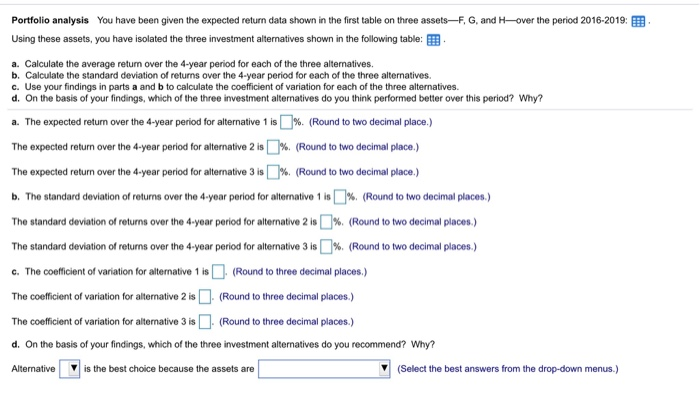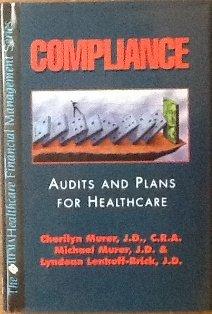Portfolio analysis You have been given the expected return data shown in the first table on three assetsF, G, and over the period 2016-2019: Using these assets, you have isolated the three investment alternatives shown in the following table: a. Calculate the average return over the 4-year period for each of the three alternatives. b. Calculate the standard deviation of returns over the 4-year period for each of the three alternatives. c. Use your findings in parts a and b to calculate the coefficient of variation for each of the three alternatives. d. On the basis of your findings, which of the three investment alternatives do you think performed better over this period? Why? a. The expected return over the 4-year period for alternative 1 is % (Round to two decimal place.) The expected return over the 4-year period for alternative 2 is % (Round to two decimal place.) The expected return over the 4-year period for alternative 3 is % (Round to two decimal place.) b. The standard deviation of returns over the 4-year period for alternative 1 is % (Round to two decimal places.) The standard deviation of returns over the 4-year period for alternative 2 is % (Round to two decimal places.) The standard deviation of returns over the 4-year period for alternative 3 is % (Round to two decimal places.) c. The coefficient of variation for alternative 1 is (Round to three decimal places.) The coefficient of variation for alternative 2 is (Round to three decimal places.) The coefficient of variation for alternative 3 is (Round to three decimal places.) d. On the basis of your findings, which of the three investment alternatives do you recommend? Why? is the best choice because the assets are (Select the best answers from the drop-down menus.) Alternative Portfolio analysis You have been given the expected return data shown in the first table on three assetsF, G, and over the period 2016-2019: Using these assets, you have isolated the three investment alternatives shown in the following table: a. Calculate the average return over the 4-year period for each of the three alternatives, b. Calculate the standard deviation of returns over the 4-year period for each of the three alternatives. c. Use your findings in parts a and b to calculate the coefficient of variation for each of the three alternatives. d. On the basis of your findings, which of the three investment alternatives do you think performed better over this period? Why? Portfolio analysis You have been given the expected return data shown in the first table on three assetsF, G, and over the period 2016-2019: Using these assets, you have isolated the three investment alternatives shown in the following table: a. Calculate the average return over the 4-year period for each of the three alternatives. b. Calculate the standard deviation of returns over the 4-year period for each of the three alternatives. c. Use your findings in parts a and b to calculate the coefficient of variation for each of the three alternatives. d. On the basis of your findings, which of the three investment alternatives do you think performed better over this period? Why? a. The expected return over the 4-year period for alternative 1 is % (Round to two decimal place.) The expected return over the 4-year period for alternative 2 is % (Round to two decimal place.) The expected return over the 4-year period for alternative 3 is % (Round to two decimal place.) b. The standard deviation of returns over the 4-year period for alternative 1 is % (Round to two decimal places.) The standard deviation of returns over the 4-year period for alternative 2 is % (Round to two decimal places.) The standard deviation of returns over the 4-year period for alternative 3 is % (Round to two decimal places.) c. The coefficient of variation for alternative 1 is (Round to three decimal places.) The coefficient of variation for alternative 2 is (Round to three decimal places.) The coefficient of variation for alternative 3 is (Round to three decimal places.) d. On the basis of your findings, which of the three investment alternatives do you recommend? Why? is the best choice because the assets are (Select the best answers from the drop-down menus.) Alternative Portfolio analysis You have been given the expected return data shown in the first table on three assetsF, G, and over the period 2016-2019: Using these assets, you have isolated the three investment alternatives shown in the following table: a. Calculate the average return over the 4-year period for each of the three alternatives, b. Calculate the standard deviation of returns over the 4-year period for each of the three alternatives. c. Use your findings in parts a and b to calculate the coefficient of variation for each of the three alternatives. d. On the basis of your findings, which of the three investment alternatives do you think performed better over this period? Why








